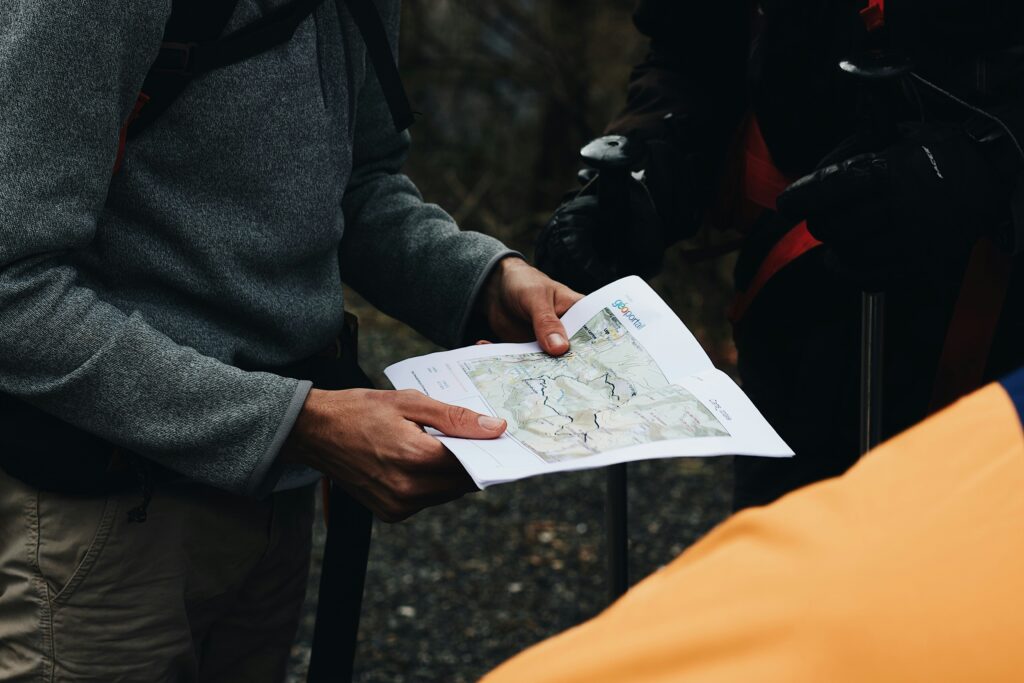Know Your Needs Before You Pack
Meal planning for multi day hikes starts with one thing: knowing your body and your route. The average hiker burns anywhere from 2,500 to 4,500 calories a day, depending on terrain, elevation, pack weight, and distance. Climbing steep trails with a full load? You’re likely at the upper end. Coasting down gentle grades? A bit less. Use this rough range as a baseline, then adjust based on your own output and needs.
Weight matters. You can’t bring a full kitchen’s worth of food, so smart hikers chase energy density foods that pack the most calories per ounce. Nut butters, dense grains, seeds, oils, and dehydrated meals outperform bulky fresh items every time. But don’t prioritize calories alone. Nutrition keeps you going after day two.
Dial in your macros. Carbs are your main fuel source they power every uphill push. Start with a solid base of things like oats, pasta, and dried fruits. Protein handles repair, especially useful after 8+ mile days think jerky, protein bars, or tuna packets. And don’t ditch fat it offers long lasting energy and keeps you warm in cold climates. A mix of all three is what keeps your legs moving and your mind sharp on the trail.
This phase isn’t about fancy it’s about efficient. Get your numbers right, pack smart, and the rest gets easier.
Plan By Day, Not Just by Meal
When you’re out on the trail for several days, simplicity is priceless. One of the easiest ways to stay organized is to sort your food by day not by type. That means instead of packing all breakfasts in one bag and all snacks in another, you group everything you’ll eat in a single day into one airtight bag. Breakfast, lunch, snacks, dinner done. One bag, one day.
Why? Because when you’re tired, dirty, or setting up camp in the rain, digging through five different food bags to build a meal is a pain. Daily meal kits save time, cut down on gear rummaging, and reduce the chance of forgetting something. You know what you’ve got, and you know if it’ll last you.
Airtight or resealable freezer bags work well. They’re lightweight, easy to squeeze into a pack, and let you portion food without needing an engineering degree. Plus, seeing how much you have left at a glance helps with rationing and morale. It’s fast, it’s clean, and it gets the job done day by day, bite by bite.
Compact, Calorie Dense Foods That Work
When you’re hiking for multiple days, every ounce in your pack matters so does every calorie. The key is to choose foods that deliver maximum energy and nutrition in a compact, lightweight form. Here’s how to build a trail menu that works just as hard as you do.
Trail Tested Staples
These high calorie, high impact foods have earned their place in many hikers’ packs. They’re lightweight, easy to pack, and offer the fuel you need to keep moving:
Instant oats: A reliable breakfast option. Just add hot water.
Dehydrated meals: Available in a wide range of flavors and calorie counts. Lightweight and easy to prepare.
Nut butters: A dense source of calories, fats, and protein. Easy to pair with bread or crackers or eat straight.
Jerky: High in protein, portable, and shelf stable.
Smart Snacks for the Trail
Keep your energy up during long hiking days with bite sized options that pack a punch:
Trail mix: Customize with nuts, seeds, chocolate, and dried fruit to fit your taste and calorie needs.
Dried fruit: Lightweight and rich in carbs. Great for quick bursts of energy.
Energy bars: Choose bars with a balance of carbs, fats, and protein. Watch out for overly sugary options.
Freeze Dried vs. Homemade Meals
Deciding between store bought freeze dried meals and DIY options? Here’s a breakdown to help you choose:
Freeze Dried Meals
Pros:
Convenient just add hot water
Long shelf life
Widely available
Cons:
Expensive (especially for long hikes)
Can be high in sodium
Less control over ingredients and portion sizes
Homemade Meal Packs
Pros:
Cost effective if prepping in bulk
Tailored to your dietary preferences
Often lower in preservatives
Cons:
Requires more prep time
Shorter shelf life (depending on ingredients)
Can be trickier to pack for optimal space and weight
Opt for a mix if possible. Use freeze dried meals for convenience on tougher days and your own creations for variety and budget savings on easier ones.
Keep Hydration in the Mix

Water is non negotiable on the trail. But not all water is safe water and how you treat it matters.
Filters and purification tablets both have pros and cons. Filters physically remove bacteria, protozoa, and debris. Many also double as water containers. Downside? They can clog or freeze if temps drop. Tablets are ultralight, cheap, and effortless but not immediate. Most require 30 minutes or more to neutralize pathogens, and some leave a distinct taste. The ideal setup? Carry both, use the filter as your primary, and stash tablets as a backup.
Electrolytes are another overlooked essential. If you’re hiking more than a few hours especially in heat replenishing sodium, potassium, and magnesium is critical for energy, focus, and avoiding cramps. Go for tablets or powder packets you can mix into water. Timing matters: add them to your first liter of the day and again during peak exertion. Don’t overdo it. One or two servings daily usually keeps you balanced.
Then there’s water for cooking. Dehydrated meals are a backcountry staple, but rehydrating them without wasting fuel is a skill. Know how much water each meal needs in advance most packets list exact amounts. Boiling takes fuel, and fuel burns fast, especially at altitude or in wind. One pro tip: use your meal pouch as a rehydration vessel. Mix in hot water, seal it up, and let the meal soak while you set up camp or filter more water. You save fuel and keep cleanup simple.
Hydration strategy is part of your meal plan. Treat water as fuel just like food, and you’ll go farther, feel better, and avoid preventable setbacks.
Real World Tips from Seasoned Hikers
Even the most carefully planned meal strategy can flop without real world testing and flexibility. Experienced hikers know that your food plan needs to reflect not just your calorie count, but your trail conditions, personal preferences, and day to day needs. Here’s what the pros have learned:
When to Double Pack Calories and When Not To
Do it when:
You’re tackling consecutive high mileage days with significant elevation gain
The weather is cold your body burns more just to stay warm
You tend to run low on energy or train intensively before your hikes
Skip it when:
You’re hiking in extreme heat (appetite drops and lower calorie burn)
You’re packing for shorter trips where pack weight matters more than long haul endurance
You overpacked on a previous trip and noticed lots of leftovers
Weight vs. Flavor Find the Balance
Just because weight matters doesn’t mean your meals have to be bland. A few strategic swaps can help you cut grams without sacrificing taste:
Trade canned goods for dehydrated or freeze dried versions
Swap bulky snacks for calorie dense options like nut butters or energy bars
Add lightweight flavor enhancers: individual spice packets, bouillon cubes, or powdered sauces
Pro tip: A small bottle of olive oil adds flavor and valuable fat based calories with minimal added weight.
Factor in the Weather
Conditions on the trail impact your appetite and energy burn more than you might expect:
Cold weather: Your body works harder to stay warm, increasing your calorie needs. Double check that your meals will cover the extra energy demand.
Hot weather: Appetite often decreases. Go with lighter, easy to digest options and prioritize hydration and electrolytes.
Be sure to adjust your food strategy with the climate and intensity of your trip. That means not just what you pack, but how much.
For more climate specific planning advice, check out our related guide: Weather Ready Packing Tips for Shifting Trail Conditions.
Do a Dry Run First
Planning is essential, but testing your plan is what makes it trail ready. Before heading out on a multi day hike, simulate the experience with a dry run. This step helps fine tune your meal plan and eliminates surprises on the trail.
Test on a Weekend Hike
A short overnight or weekend trip is the perfect setting to test:
The portion sizes of your meals
How well certain foods cook with your current setup
Whether your food choices match your energy needs
You’ll also quickly see whether you’re overpacking or missing calorie rich options.
Track What You Actually Eat
Keep a simple food log while you’re out. Capture:
What meals or snacks you ate
What you skipped (and why)
Times of day when you felt hungriest or low on energy
This information will help you separate “nice to have” from “actually needed.”
Make Smart Adjustments
Once you’re back, review your notes and adjust your meal list based on:
Your real world appetite
How much effort each meal required to prep
What fueled you best over various terrain and times of day
Refining your food strategy now greatly increases your comfort and performance on longer hikes. Think of this dry run not as extra effort, but as part of your training.
Final Checks Before You Head Out
Before zipping up your pack and hitting the trail, take one last hard look at your food setup. Count meals per day, not just total items. Everything breakfasts, trail snacks, dinners should be bundled and accounted for. Then, add 10% more food as a buffer. It’s a small weight penalty that covers big variables: unpredictable weather, longer than planned days, or just plain hunger.
Double check your cooking setup. Bring only what you need: stove, lighter, fuel, one solid pot, one solid spork, and a backup firestarter. Trash bags aren’t optional pack out everything. Keep it tight, clean, and minimal.
Lastly, make your life easier on the trail. Use color coded dry bags or label each day’s food. No digging, no guessing. When you’re tired and soaked, grabbing the right fuel fast makes a big difference. Get organized now; future you will thank you.
